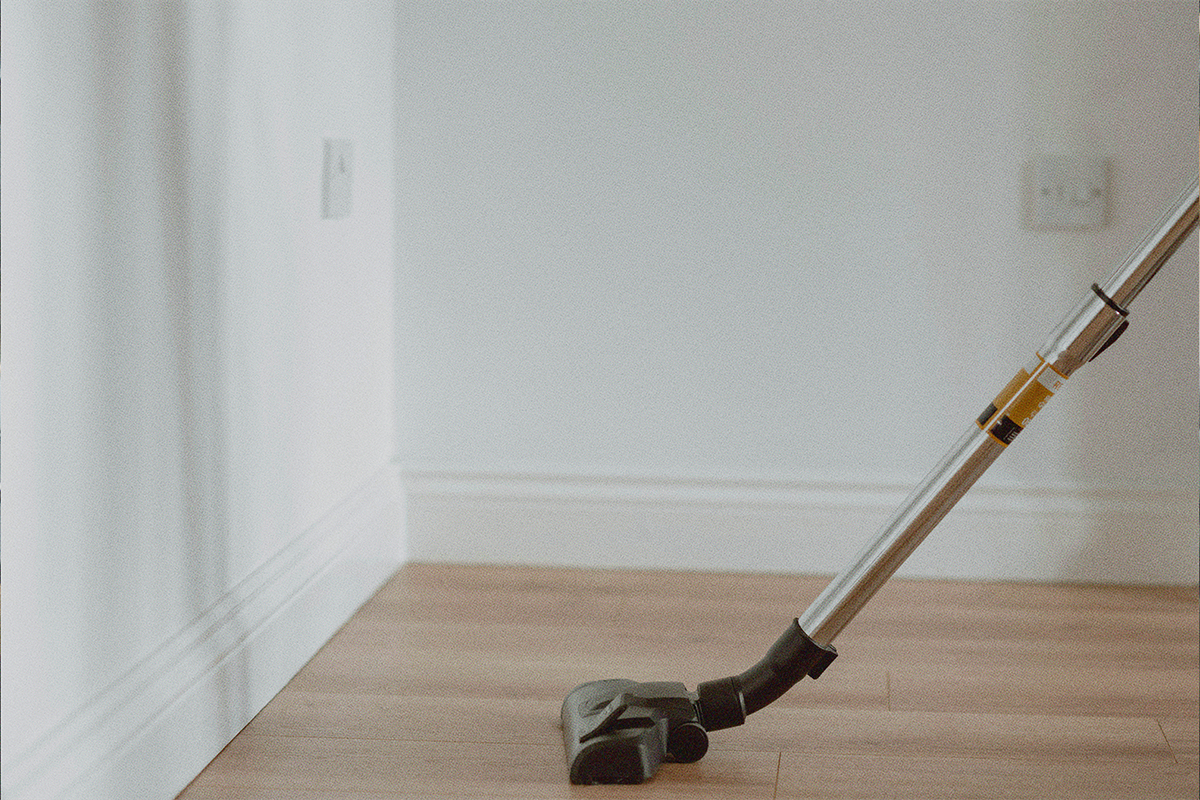 OUR STRATEGY
OUR STRATEGY
Arlene Blum is a biophysical chemist, author and mountaineer.
She is the founder and executive director of the Green Science Policy Institute which works with scientists, government, industry, and non-profits to facilitate more informed decision-making about flame retardants and other chemicals used in consumer and building products.
Healthy Building Network founder Director Bill Walsh caught up with Elaine, recording the following conversation:
Bill Walsh:
How did you get started working on flame retardants?
Arlene Blum:
Thirty years ago, as a researcher at the University of California, Berkeley, I published a paper in Science magazine showing that “Tris” flame retardants in children’s sleepwear caused mutations, were possible cancer hazards, and migrated from pajamas into children. The flame retardants were removed from children’s sleepwear in 1977, but chlorinated tris is now back in use in foam in furniture and other products.
BW:
Why are you so concerned about flame retardants in building materials?
AB:
If a building contains halogenated flame retardants in the insulation, they can filter into the building throughout its life and also form toxic dioxins if the building burns.
I know it’s a real dilemma for people when they learn that plastic insulation materials, such as polystyrene, polyisocyanurate, and polyurethane, that can help reduce climate change, often contain flame retardants which can cause serious health and environmental harm. But the good news is that this is a problem that can be solved.
Once green building professionals understand the issue, they can move to safer substitutes and strategies that don’t have potential adverse health impacts. In fact of the various groups with which I’ve worked on reducing toxics in products, the green building community has been the most responsive. So I am very happy to have the opportunity to share the message about moving away from the use of halogenated flame retardants at Greenbuild.
The new LEED Pilot Credit on Chemical Avoidance for not using phthalates and halogenated flame retardants inside buildings should accelerate our progress towards healthier buildings.
BW:
You mentioned that this is also a chemical contamination problem that could have negative impacts on our health and well-being at a global level? How?
AB:
Many halogenated flame retardant chemicals are persistent and bioaccumulate especially in humans and animals high on the food chain. It is almost impossible to clean them up once they are out in the world. For example, PCBs, chlorinated chemicals that were also used as flame retardants, were banned in 1977, but very high concentrations can still be found in wildlife and some human populations today. Studies show that human breast milk contains flame retardants, and toddlers have three to four times higher body levels than their mothers.
When tested in animals, many halogenated flame retardants have been found to cause health problems like cancer, reduced fertility and IQ, thyroid disorders, and developmental impairment. Many halogenated flame retardants are also endocrine disrupting chemicals that can harm us at very low concentrations.
BW:
How do you weigh the known benefits today against long term unproven risks?
AB:
In furniture there is no proven benefit. It makes more sense to reduce the sources of ignition with fire-safe cigarettes and candles than to put potentially toxic chemicals in all the possibly flammable materials in our homes. Today the risk of home fires is diminishing due to a 50% decrease in cigarette consumption since 1980, enforcement of improved building, fire, and electrical codes, increased use of sprinklers and smoke detectors. These strategies provide measurable improvements in fire safety without toxicity.
Smoke and toxic gases kill people in fires, more than flames. Research on furniture fires show that while halogenated flame retardants can reduce the time for ignition by seconds, they greatly increase the carbon monoxide, smoke, and soot. The chemicals also release dioxin and related compounds when burned at relatively low temperatures. So the benefits of retarding the fire with toxic chemicals is greatly reduced by the increased fire toxicity and dioxins at the fire scene.
Given the lack of proven benefit in some cases, the risk-benefit calculation on chemical flame retardants can be tenuous even before you start to consider the widespread exposure to these chemicals on a daily basis.
Better methods of reducing fire risks include careful material selection and alternative fire suppression strategies that can be designed into products and buildings.
BW:
How can people take this knowledge and translate it into action?
AB:
When people know about the hazards of the flame retardants that are commonly used in many plastic foam insulations, furnishings and other building materials, they can choose alternative products or push for less toxic flame retardants. When green building professionals make these choices, this will increase the availability and decrease the cost of the alternatives.

Moving the market demand for flame retardants in the huge building sector can also help with policy changes. We have been providing scientific support to change a California furniture flammability standard to provide similar or greater fire safety without flame retardant chemicals.
We also need national chemical policy reform. Because of weaknesses in the Toxic Substances Control Act, which has not been updated since 1976, chemicals are innocent until proven guilty and that proof is almost impossible to obtain. Even asbestos could not be banned. And manufacturers are not required to perform any toxicity tests before putting chemicals into products! Green buildings need to be both energy-efficient and healthy. Reducing the use of halogenated flame retardants will help achieve this and help create a healthier world for us all.
“To protect the health of our state’s children,” California Governor Arnold Schwarzenegger signed legislation on October 14, 2007 prohibiting the use of phthalates (pronounced “thall-eights”) in childcare products designed for babies and children under three years of age.
Phthalates are used as plasticizers to soften polyvinyl chloride plastic, also known as PVC or vinyl, including a wide range of building products such as vinyl flooring, wallcovering and upholstery.
Phthalate plasticizers are not chemically bound to PVC. They have been found to leach, migrate or evaporate into indoor air and atmosphere, foodstuff, IV solutions and other materials, etc. Consumer products containing phthalates can result in human exposure through direct contact and use, indirectly through leaching into other products, or general environmental contamination. Humans are exposed through ingestion, inhalation, and dermal exposure during their whole lifetime, starting in the womb. Phthalates come in many different formulas. Most haven’t been tested or examined at all for human health impacts. The Consumer Product Safety Commission has noted that one phthalate formula common to certain building materials — DINP [2] — is a mixture of up to 100 chemical variants, of which only five have been minimally studied [3]. Others have been found to pose a risk of serious negative health impacts at very low doses.
Phthalates have been shown to have negative effects on human health including interference with the natural functioning of the hormone system, and reproductive and genital defects. Phthalates may lower sperm count and are associated with the risk factors for testicular cancer, as well as early onset of puberty and premature birth.
In June 2005, HBN discussed recent research findings that the cumulative impact of different phthalates leads to an exponential increase in associated harm, and documented levels of phthalates found in humans at levels higher than levels shown to cause adverse health effects. A 2007 study concluded that the exposure of children to phthalates exceeds that in adults, warning, “Current human biomonitoring data prove that the tolerable intake of children is exceeded to a considerable degree, in some instances up to 20-fold” [4].
Phthalates have been found in high quantities in studies of household dust. Other studies have documented links between childhood asthma and phthalate exposure from vinyl flooring. Because phthalates are not a volatile organic compound (VOC), however, they are usually not accounted for by indoor air quality standards such as those used to certify green building materials.

California now joins the EU [5] in restricting the use of phthalates in the use of children’s products, and many other US states are expected to take up legislation similar to that signed by Governor Schwarzenegger [6].
Like the human carcinogens vinyl chloride and dioxin, phthalates are uniquely associated with PVC [7]. It is this triple threat from PVC that distinguishes it as the worst plastic for environmental health and green building. Regrettably, there are still few restrictions on the use of vinyl in green buildings.
SOURCES
- Comments of Vinyl Institute President Timothy Burns on LEED CI Draft Proposed Rating System https://www.usgbc.org/Docs/LEED_tsac/PVC%20-%20Vinyl%20Institute%20-%20Nov20-2000.pdf. Diisononyl phthalate, a general use vinyl plasticizer. It is the primary plasticizer used in vinyl toys, though it finds many other applications such as garden hoses, shower curtains, vinyl flooring and wall covering. Source: http://www.phthalates.org/glossary.asp [link no longer available]
- Diisononyl phthalate, a general use vinyl plasticizer. It is the primary plasticizer used in vinyl toys, though it finds many other applications such as garden hoses, shower curtains, vinyl flooring and wall covering. Source: http://www.phthalates.org/glossary.asp [link no longer available]
- “Aggregate Exposures to Phthalates in Humans,” Health Care Without Harm, July 2002. http://www.noharm.org/lib/downloads/pvc/Agg_Exposures_to_Phthalates.pdf, p.16, footnote 149 Heudorf et al., 2007. “Phthalates: Toxicology and exposure“. International Journal of Hygiene and Environmental Health. Article in Press.
- Heudorf et al., 2007. “Phthalates: Toxicology and exposure“. International Journal of Hygiene and Environmental Health. Article in Press.
- “Permanent EU ban on phthalates in toys and childcare articles is published” TDCTrade.com website, Feb 03, 2006, http://www.hktdc.com/info/mi/a/baeu/en/1X008GDB/1/Business-Alert-%E2%80%93-EU/Permanent-EU-ban-on-phthalates-in-toys-and-childcare-articles-is-published.htm
- “A nationwide toxic toy ban likely to follow state lead” SF Chronicle, October 16, 2007, http://www.sfgate.com/cgi-bin/article.cgi?file=/c/a/2007/10/16/MNT0SQDJV.DTL
- About 80 to 90% of phthalate production goes into PVC (Costner, Pat et al. 2005, “Sick of Dust: Chemicals in Common Products–A Needless Health Risk in Our Homes”, Safer Products Project, http://safer-products.org/downloads/Dust Report.pdf and the Phthalates Information Centre Europe http://www.phthalates.com
Chemicals From Common Products Create “Toxic Cocktail” in Homes
Toxic chemicals common to home furnishings and electronic equipment have been found in household dust, including chemicals internationally recognized as harmful or toxic to the immune and reproductive systems; babies and young children are particularly at risk from exposure. That is the finding of a 2005 report, Sick of Dust: Chemicals in Common Products, which investigated six classes of chemicals in dust samples taken from 70 homes in seven states across the U.S. Among the chemicals documented in household dust are two — phthalate plasticizers and organotin stabilizers — that are ubiquitous in PVC vinyl building materials.
of phthalates manufactured are used in PVC products, and have been documented as leaching from shower curtains and flooring.
Animal studies have found phthalates disrupt reproductive systems, particularly in male offspring, and can contribute to male infertility. Phthalates have also been linked to asthma and respiratory problems in children.

Organotins, which are found in PVC water pipes, PVC food packaging materials, and many other consumer products, are poisonous in even small amounts, and can disrupt the hormone, reproductive, and immune systems.
In addition to the two chemicals commonly associated with PVC building materials, the report also found high concentrations of brominated flame retardants, which are incorporated into many plastics, including PVC, and electrical goods. Studies have revealed the breast milk of American women has 10 to 100 times higher concentration of PBDE, a type of flame retardant, than European women. According to Sick of Dust, a recent study indicates that levels of PBDE in Swedish breast milk began to decrease in 1997, possibly due to a voluntary phase-out of penta-DBE.
These findings add to the momentum of an anti-PVC movement which, according to a feature article in the Christian Science Monitor, is “picking up steam,” and provide additional ammunition for the many commenters who took aim at the USGBC’s draft PVC report that found “PVC does not emerge as a clear winner or loser.”
The Sick of Dust report ranks brand name companies and retailers on their use of hazardous chemicals, and provides an outline of fundamental changes needed to bring American chemical regulation up to a level that will protect basic health today and in future generations. But the easiest way to eliminate phthalates and organotins from household dust is to eliminate PVC from the household.
To breathe, I have to take way too many medicines today – each with their side effects.
I’m an adult. Imagine a child having to wade through all the symptoms and medicines associated with asthma.
Many factors contribute to the development and aggravation of asthma. However, I am wondering whether the installation of PVC flooring in my bathroom and kitchen contributed to the worsening of my breathing.
The floor was laid three years ago. A slow leak under my sink went unnoticed until the downstairs’ neighbor’s ceiling fell. About this time, my life-long respiratory ailments worsened.
Scientists are investigating the relationship between moisture, PVC flooring, and asthma.
In Sweden, a study of 10,851 children found the presence of both floor moisture and PVC significantly increased the risk of asthma.[1] The incidences were higher in multiple family dwellings where a higher percentage of PVC flooring was found.
Many workers in an office building in Finland, over a short period of time, were diagnosed with adult-onset asthma at a rate of about 16 times higher than expected.[2] An investigation uncovered in the office air space high levels of volatile chemicals, such as 2-ethyl-l-hexanol, l-butanol, which are degradation by-products of vinyl. The problem was traced back to damp concrete surfaces below the PVC flooring.
The PVC flooring was removed and surface of the concrete slab warmed up enough to remove the volatiles that had been diffused within. In rooms cleaned up in this manner and floors replaced with ceramic tile, the emissions of the three main volatiles (2-ethyl-l-hexanol, l-butanol, and 3-heptanone) decreased, as did employees’ symptoms and many asthma patients’ needs for medication.

Furthermore, studies have linked dust containing phthalates from homes with PVC flooring with an increase in asthma.
To make it less brittle, PVC is coated with plasticizers called phthalates. These chemicals evaporate and enter the air space where they adhere to dust particles.[3] New research shows that dust from homes containing PVC floors has higher levels of phthalates – particularly di(2-ethylhexyl) (DEHP) – than dust from homes without vinyl floors. One recent case-control study found an association between dust concentrations of phthalates inside homes and asthma, rhinitis and eczema.[4] The presence of PVC flooring in the child’s bedroom was the strongest predictor of respiratory ailments.
Other studies reach similar conclusions,[5] with one recommending “avoidance of PVC flooring in homes with small children” as a simple first step.[6]
Avoiding PVC flooring isn’t difficult, but it’s often disregarded as a cost-cutting measure.
Meanwhile, the costs associated with the increase in rates of asthma keep adding up. According to officials in my home state of Massachusetts, asthma is the number one preventable cost to hospitals.[7]
Prescription costs, doctors’ fees, lost wages due to time off from work for parents of asthmatic children, and the un-quantifiable cost of school absenteeism add up to a hefty burden for families and society.
Alternatives to PVC that are easier on the lungs exist today.[8]
By switching to safer products we could be offering a child the priceless gift of easy breathing.
Guest columnist Niaz Dorry is a veteran activist and writer living in Gloucester, Massachusetts. She works with small-scale, traditional, and indigenous fishing communities in the U.S. and from around the globe to advance the rights and ecological benefits of the small-scale fishing communities as a means of protecting global protect marine biodiversity. In 1998, Time Magazine named Niaz as a Hero For The Planet for this work. Her fisheries articles appear regularly in a range of publications.
SOURCES
- Bornehag, C.G., Sundell , J., Hägerhed , L., Janson, S., and the DBH-study group, “Dampness In Buildings And Health. Dampness At Home As A Risk Factor For Symptoms among 10 851 Swedish Children” (DBH-STEP 1) (2002), SP Swedish National Testing and Research Institute and the International Centre for Indoor Environment and Energy, Technical University of Denmark Karlstad University, Sweden.
- Tuomainen, A., Seuri, M., Sieppi, A. “Indoor Air Quality And Health Problems Associated With Damp Floor Coverings In An Office Building” (2002), Kuopio Regional Institute of Occupational Health, Department of Occupational Hygiene and Toxicology, Kuopio, Finland; Kuopio Regional Institute of Occupational Health, Department of Occupational Medicine, Kuopio, Finland; and, Medivire Occupational Health Center, Kuopio, Finland.
- Katherine M. Shea, MD, MPH, and the Committee on Environmental Health; “Pediatric Exposure and Potential Toxicity of Phthalate Plasticizers.” Technical Report. American Academy of Pediatrics. PEDIATRICS Vol. 111 No. 6 June 2003.
- Carl-Gustaf Bornehag, Jan Sundell, Charles J. Weschler, Torben Sigsgaard, Björn Lundgren, Mikael Hasselgren, Linda Hägerhed-Engman, “The Association Between Asthma and Allergic Symptoms in Children and Phthalates in House Dust: a Nested Case-Control Study, Environmental Health Perspectives, July 15, 2004 (The National Institute of Environmental Health Sciences, National Institutes of Health, U.S. Department of Health and Human Services).
- Ruthann Rudel and Julia G. Brody, Silent Spring Institute, Newton MA; David Camann, Southwest Research Institute, San Antonio, TX; John Spengler, Harvard School of Public Health, Boston, MA; Leo Korn, UMDNJ, New Brunswick, NJ, “Phthalates, Alkylphenol, Pesticides, Polybrominated Diphenyl Ethers, and Other Endocrine Disrupting Compounds in Indoor Air and Dust,” Environmental Science & Technology, September 13, 2003.
- Haumann , T. and Thumulla, J., “Semi Volatile Organochemicals In Indoor Environment – Chlorinated Phosphorus And Organotin Compounds In Material Und House Dust Samples” (2002) Umweltanalytik und Baubiologie, Essen, Germany. AnBUS e.V., Fürth, Germany.
- Remarks of Massachusetts Division of Health Care Finance Policy official at the Massachusetts Department of Public Health’s conference on asthma, March 23, 2002.
- Healthy Building Network’s PVC-Free Resilient Flooring chart, http://www.healthybuilding.net/pvc/PVCFreeResilient.html.

In the last 40 years, polyvinyl chloride plastic (PVC) has become a major building material. Global vinyl production now totals over 30 million tons per year, the majority of which is directed to building applications, furnishings, and electronics.
The hazards posed by dioxins, phthalates, metals, vinyl chloride, and ethylene dichloride are largely unique to PVC, which is the only major building material and the only major plastic that contains chlorine or requires plasticizers or stabilizers. PVC building materials therefore represent a significant and unnecessary environmental health risk, and their phase-out in favor of safer alternatives should be a high priority. PVC is the antithesis of a green building material. Efforts to speed adoption of safer, viable substitute building materials can have significant, tangible benefits for human health and the environment. This report describes the full life cycle of PVC in the contemporary building industry from production to disposal.

 Health
Health